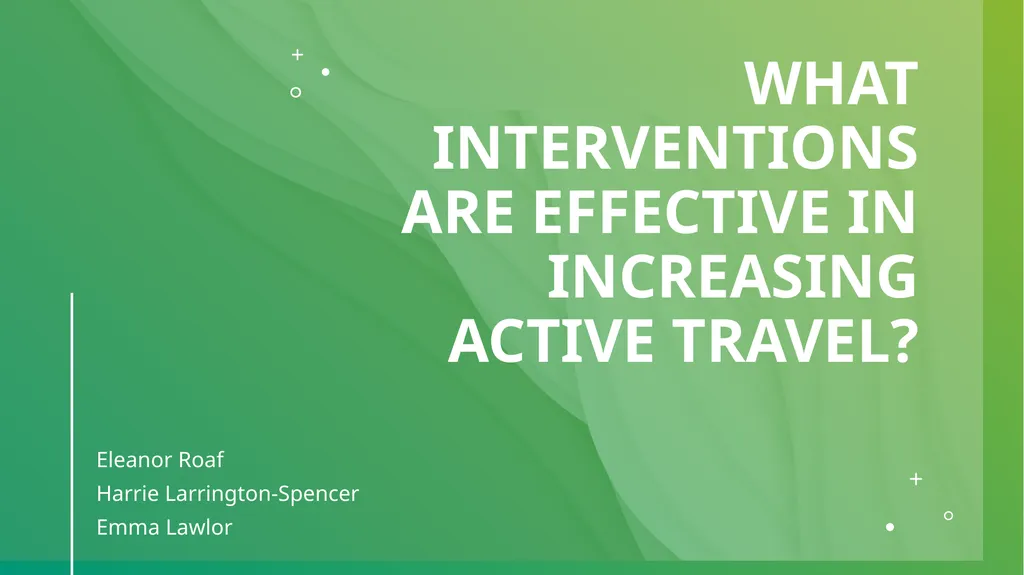
Author : conchita-marotz | Published Date : 2025-05-19
Description: What interventions are effective in increasing active travel? Eleanor Roaf Harrie Larrington-Spencer Emma Lawlor Background Active travel is when physical activity is incorporated into the practice of travelling (Cook et al., 2022).Download Presentation The PPT/PDF document "" is the property of its rightful owner. Permission is granted to download and print the materials on this website for personal, non-commercial use only, and to display it on your personal computer provided you do not modify the materials and that you retain all copyright notices contained in the materials. By downloading content from our website, you accept the terms of this agreement.
Here is the link to download the presentation.
"What interventions are effective in increasing"The content belongs to its owner. You may download and print it for personal use, without modification, and keep all copyright notices. By downloading, you agree to these terms.













